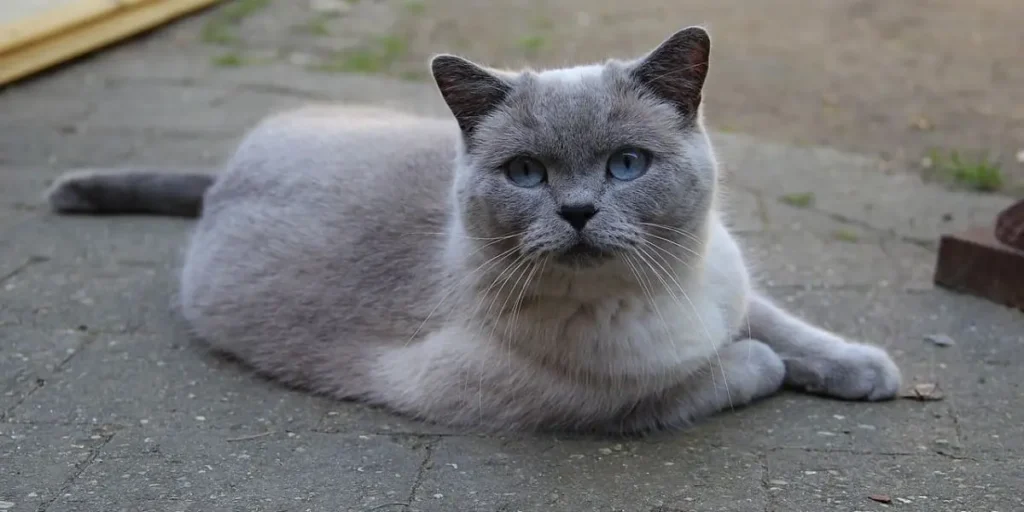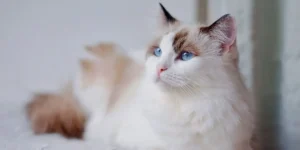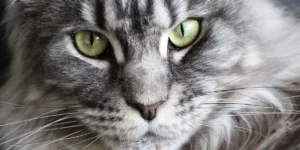Table of contents
Round, sturdy, and powerful, the British Shorthair enjoys both play and relaxation in the safety of its home. Known for its affectionate yet independent nature, it remains one of the most beloved breeds in Great Britain and beyond.
Breed History
The ancestors of the British Shorthair adapted to the harsh climate of the British Isles by developing dense coats that protected them from bad weather and cold.
Harrison Weir, a pioneer in cat breeding, founder of the National Cat Club, and organizer of the first cat show in London in 1871, played a key role in developing the breed. A female British Shorthair was exhibited at that inaugural Crystal Palace show, where she stood out with her stunning blue coat and amber eyes.
The two World Wars nearly wiped out the breed. During and after these conflicts, breeders crossed British Shorthairs with Persians, then Russian Blues and some Chartreux to rebuild numbers. Persian input also produced the longhaired version, known as the British Longhair. Other breeders focused on preserving the shorthaired lines. By the 1970s, the breed was no longer endangered.
Today, the British Shorthair is among the most popular cats in the United Kingdom.
British Shorthair Photos
Examples of British Shorthairs: Emilie, Plume, Albert, Zara, Tiger, Gabin.
Physical Characteristics
- Body: Semi-cobby, short, powerful build with strong muscles, short thick neck, broad shoulders and hips, sturdy legs, and overall roundness.
- Coat: Short, dense, upright, woolly texture with abundant undercoat.
- Color: All coat colors are accepted.
- Head: Large, round head with full cheeks, rounded skull, short broad nose, and lightly defined stop. Males show strong jowls, less prominent in females and kittens.
- Eyes: Large, round, vivid, uniform in color.
- Ears: Small to medium, wide at base, set apart, with rounded tips.
- Tail: Quite short, thick at base, nearly uniform in thickness, ending rounded.
Temperament and Personality
Thanks to its balanced temperament, the British Shorthair is a wonderful family companion. It is affectionate yet independent, never overly clingy. Discreet in attitude and voice, it communicates with soft meows.
Not hyperactive, it is generally calm but will occasionally display athletic ability while playing or exploring. Its composed yet playful nature makes it a great friend to children. Intelligent, friendly, and curious, it does not shy away from strangers – a trait that may be risky in some situations.
Living Conditions
With strong adaptability, the British Shorthair suits both urban and rural lifestyles. It seeks comfort and safety indoors but also benefits from outdoor exploration. Ideally, it should have access to a secure yard. It can also be trained to walk on a leash, with a harness preferred for even pressure distribution. Regular safe outdoor access is key for its well-being.
Health
The British Shorthair is robust but prone to certain conditions, mainly:
- Polycystic kidney disease (PKD): Cyst formation in the kidneys that can progress to renal failure.
- Hypertrophic cardiomyopathy (HCM): Thickening of heart muscles and papillary muscles, impairing heart function. Other breeds such as the British Longhair, Maine Coon, Ragdoll, and Sphynx are also predisposed.
Routine care, proper diet, and up-to-date vaccinations (panleukopenia, rabies, calicivirus, feline leukemia) help ensure a long, quality life.
- Hypoallergenic breed: No.
Life Expectancy
The British Shorthair typically lives between 15 and 20 years.
Care and Grooming
Maintenance is straightforward but essential. Weekly brushing keeps the coat healthy, becoming daily during shedding seasons to reduce hairballs. Additional care includes cleaning eyes and ears with appropriate solutions, trimming claws (especially for indoor cats), and brushing teeth once or twice a week to prevent tartar.
Regular grooming preserves coat beauty and protective capacity.
Price and Budget
| Category | Minimum | Maximum |
| Purchase Price | $400 | $1800 |
| Annual Care Cost | $200 | $400 |
Diet
The British Shorthair is less active and enjoys eating, making it prone to obesity. Its diet should provide high-quality proteins while remaining low in fat. Supplements, especially vitamins, may be given under veterinary advice. Fresh water must always be available.
Similar Breeds
American Shorthair, Exotic, American Wirehair, Snowshoe, European Shorthair.


